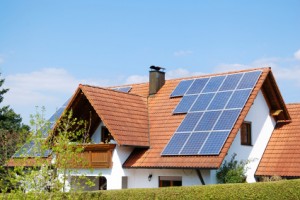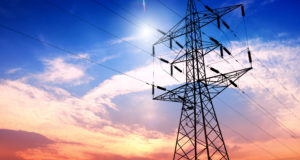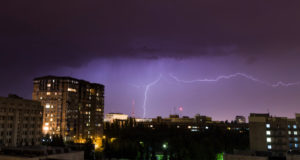One of the things that attracts people to the off-the-grid lifestyle is the sense of accomplishment associated with learning how to live self-sufficiently and independently. This country was built by hardy and intrepid trailblazers who were not afraid to venture where few others had gone before, and when we leave the dependency fostered by modern society behind to strike out on our own, we are helping to rejuvenate the pioneer spirit that made America the greatest nation on earth.
When we speak of going off the grid in the larger context, we are using a metaphor that captures the true essence of a bold move into the unknown. But going off the grid literally is the central transformation we must be prepared to make if we expect the metaphor to retain the strength of its meaning, and this is why choosing an alternative form of power generation is one of the most important decisions that any aspiring prepper/homesteader will ever have to make.
 Solar energy has already successfully secured a prominent place for itself in the off-the-grid movement, and its popularity is growing steadily among those who are looking for a highly efficient, low-maintenance method of independent energy generation. But that doesn’t change the fact that solar power systems are still a relatively unfamiliar technology to many homesteaders and survivalists, and to Americans in general. Consequently, people considering making the switch to solar often approach the topic with trepidation, worried that they might get in over their heads with a technology that they don’t entirely understand.
Solar energy has already successfully secured a prominent place for itself in the off-the-grid movement, and its popularity is growing steadily among those who are looking for a highly efficient, low-maintenance method of independent energy generation. But that doesn’t change the fact that solar power systems are still a relatively unfamiliar technology to many homesteaders and survivalists, and to Americans in general. Consequently, people considering making the switch to solar often approach the topic with trepidation, worried that they might get in over their heads with a technology that they don’t entirely understand.
Fortunately, a wide variety of sources exist online that can answer just about any question a prospective owner of a solar power system could possibly think of asking. In keeping with this spirit of full disclosure and the open sharing of information, what we are about to reveal are some of the “dos” and “don’ts” of purchasing, installing, and using a solar photovoltaic electricity-producing system. This list is not intended to be exhaustive, but if you are thinking about hopping on board the solar train ,what you will learn here could help you avoid some costly and possibly even catastrophic mistakes.
Amazing “Solar Generator” Is Like Having A Secret Power Plant Hidden In Your Home!
The “Dos”
- Do make sure the roof where your solar panels will be installed is facing the southern sun, and that your solar photovoltaic system will have an unimpeded view of the sun as it tracks across the sky from east to west. Trees that could potentially cast a shadow on even one panel during the critical 10 a.m. to 2 p.m. period, when energy harvest is greatest, should be trimmed, and solar panels should be kept away from chimneys or any other object on the top of the building where they are being placed that could conceivably shade them from the sun’s energy-filled rays.
- Do have your solar panels installed with a decent amount of separation between the array and the rooftop. Despite what you may have heard, solar cells work much more efficiently when they are kept cool because it is the light from the sun that is being collected for conversion to electricity and not its heat. Allowing the air to circulate beneath photovoltaic cells will prevent heat from building up, which is necessary because solar panels can get extremely hot after the sun has been shining on them for awhile.
- Before you actually get to the point where you are ready to calculate your total energy needs and purchase a solar power system to meet them, do perform a home energy audit that will help you to identify every way in which you may be wasting or losing energy. If you can afford newer more energy-efficient appliances, this would be an excellent time to get them as well. A solar power set-up is not a cheap investment by any means, so the fewer panels you have to buy for your array, the better. The off-the-grid lifestyle is all about the efficient use of scarce resources, and you should bring this mindset with you in everything that you do on your homestead.
- By all means, do take full advantage of every state, local, and federal tax credit, subsidy, rebate, and exemption that you can find. Governments at all levels are rather gung-ho about alternative energy these days, and a bunch of financial breaks and incentives are available that can help make solar energy systems more affordable for the average consumer. In fact, just the Federal Solar Tax Credit alone can save you up to 30 percent on your initial investment.
- Do install your new solar energy system yourself, if you dare. You will hear a lot about the importance of hiring a professional to install your array, but you may be able to take on this challenge yourself as long as you go into it with the right attitude. What this means is that you should go into it thinking that installing a solar energy system for your home is going to be the most intricate, intense, and difficult job you have ever undertaken in your entire life. Whether or not this is actually true is irrelevant; the point is, you must approach it as if this were true, because only then will you be sure to put in the time and dedicated effort necessary to find out everything you need to know about installing a solar energy system safely and efficiently.
The “Don’ts”
- Don’t make your energy use calculations during a time of year when your total consumption of electricity is not at its peak. Remember that your system will have to be able to handle periods when demand is high, and it is these high points of energy usage that you should use when trying to figure out how large your new solar set-up should be. Generally speaking, you can probably expect to use the most electricity in the wintertime, when the heat will be turned up and the lights must be kept on for longer periods of time.
- Don’t expose your solar panels to the grave threat of Galvanic corrosion. Okay, so maybe the threat really isn’t as serious as all that, but nevertheless, you should not let your solar panels come into contact with materials made from dissimilar metals because this can set off a chemical reaction that will corrode your panels and eventually damage the structural integrity of your array. This means you should not attach a solar panel directly to a metal roof, nor should you use incompatible metal bolts and screws when you set up your system. Solar panels are usually made from aluminum, and stainless steel is very compatible with aluminum and will not cause Galvanic corrosion.
- Don’t let your solar PV system extend beyond the edge of your roof. Wind will be able to get underneath and weaken the fixings that hold the panels to the house, and if the winds are strong and consistent enough, your may eventually discover your expensive solar panels lying broken and battered in your front yard. A solar array should be fastened to the roof anywhere from a few inches to three feet from the edge, depending on how strong the strongest winds are in your area (the three foot standard is for panels mounted on homes located in hurricane zones).
- Familiarize yourself with the code and permit requirements in your state and/or local area so you don’t inadvertently violate the law when you install your new solar energy system. Most codes are based on Article 690 of the National Electrical Code, an official publication of the National Fire Protection Association, so it would be a good idea to check this out to see if what you are doing is safe and legal. In addition, city or county offices in your area are likely to require a building permit, an electrical permit, or both.
- Don’t try to figure out everything all by yourself. There are dozens of online forums that cater to solar enthusiasts, where you will find all kinds of useful advice and suggestions hidden among the insults and the personal attacks (these are internet forums, after all). Of course, you can join and ask questions yourself if you want, and if there are others in your area who have gone solar, you can always go straight to the source to get the inside scoop on the kinds of issues and problems that might arise once you decide to get your own system.
- When the time comes to actually buy and install your system, don’t act like you were born yesterday, or like you just fell off the turnip truck five minutes ago. Check out any solar company and/or installer you are considering contracting very carefully; ask to see references, credentials, certifications, etc., and be extremely suspicious of low bids that seem too good to be true. There are plenty of excellent solar companies and installation experts out there, and the only way you will get taken by scam artists or fall in with incompetents is if you don’t do your due diligence.
Here Comes The Sun
The world of solar energy is filled with promise and possibility. Energy self-sufficiency can be yours if you choose to purchase and install a new solar power set-up, and as long as you play it smart and pay attention to the details, we can almost guarantee that you will never live to regret your decision to go solar.
©2012 Off the Grid News
 Off The Grid News Better Ideas For Off The Grid Living
Off The Grid News Better Ideas For Off The Grid Living




